Whether you’re mixing, mastering, tracking, or editing audio, using studio monitors that are appropriate for your task is one of the keys to getting good results. Monitors play a central role in how we perceive the audio that we’re working on, and if that perception is less than accurate, the results will likely be, too.
Considering the dizzying amount of models on the market, it’s not easy to choose the monitors that are right for your situation. Do you want passive or active models? What size driver is appropriate for you? Do you want 2-way or 3-way units? Do you prefer conventional tweeters or ribbon tweeters? Do you need built-in EQ for room tuning? Do you like ported or non-ported cabinets? How much can you spend?
To help you find perspective, we talked to audio professionals in a number of different sectors of the business to find out what monitors they use, and why they chose them.
Stan Lewis
MusicRadar's got your back
Music production/TV and film scoring
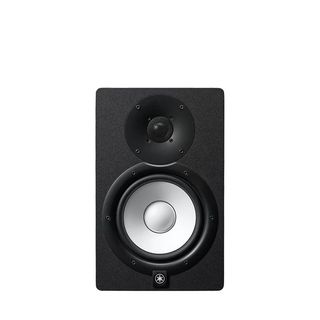
Yamaha HS7 | $299.99 each | 2-way active | 6.5" woofer | 1" dome tweeter | switchable filters
When he’s touring with Kendrick Lamar or artists like Seal, Mary J Blige, or Darius Rucker, keyboardist Stan Lewis produces rap, jazz, classical, gospel, you name it, from his home studio—and writes music for film and TV. “I’ve worked on a lot of projects out of my studio using the fantastic Yamaha HS7s as my go-to monitor for movie scores, [music for] show dates for Patti Labelle, and any projects that come my way,” he says. “I’m currently finishing up my own personal project, and projects for my artist Wendy Cox, Lakiesha Solomon, and a collaboration with Martin Johnson for an up coming album.”
The HS7 monitors feature a 6.5" cone woofer and 1" dome tweeter. “The speakers I was using before were really bass-heavy,” he says, “so I wouldn’t get a true sound.” Not so with the HS7s. “They give you enough in the bottom end, but it’s not overbearing. It doesn’t get in the way. And if you pump them up, they crank up a little bit.” He also finds the high end they produce to be both accurate and non-fatiguing: “It’s a pretty flat response. It’s a natural sound that comes out of the high end, and it’s not piercing. They’ve been really a pleasure to listen to. In terms of getting tired of the sound, I haven’t found that at all. I find myself working longer studio hours.” [Laughs]
Since switching to the HS7s Lewis finds his mixes translate better to other systems, too. “All the way around, it’s like a true natural sound, and I’m really excited to be using these speakers. I actually want to get a pair of the HS5s as well, but the HS7s are truly a blessing.”
Kevon Madigan
FOH mixing
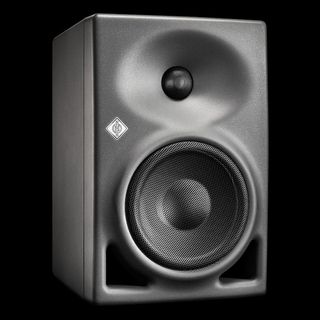
Neumann KH 120 A G | $749.95 each | 2-way active | 5.25" woofer | 1" tweeter | switchable filters
It might sound odd that an FOH engineer would use studio monitors, but Madigan, whose chief gig is engineering for Crosby, Stills, and Nash, uses his Neumann KH 120 A Gs for several different tasks. “I’ve been using them as almost a headphone replacement,” he says. “They live on stands on either side of the console [at the venue], so if I have to do any work when I arrive in the morning, or recordings that need to be mixed, that’s what I’ve been using.”
Madigan says that every CSN show is recorded to multitrack. “Sometimes we’ll have to do stuff for TV, or one of the guys will want a mix of a show or a particular song. And that will be just as easy as me coming in, getting set up, and getting to work with the KH 120s. Because they’re such a wide-range speaker, surprisingly for the size, you can mix fairly accurately on them.”
The Neumanns are so versatile that on live shows, Madigan sometimes uses them as his own personal monitors, if his mix position doesn’t allow him to hear well enough at FOH. “When we're in some of the larger theaters, and I’m way deep under a balcony, and I’m right at the back wall, I’m probably in the worst place in the house for sound. Often, I'll delay the KH 120s to our P.A., and they're running during the show. So the monitors are just used to augment what’s going on, so that I make sure that what I’m hearing is what the majority of the audience is hearing. I don’t have to get out from behind the console and walk 20 feet farther forward and say, ‘Ah, that’s what’s actually going on.’ I’ll already have done that several times during the day. ”
Madigan uses larger KH 310s with the KH 810 Active Studio Subwoofer extensively in the studio and during pretour rehearsals, to help him create FOH-mix settings for the various songs. "I like these in the studio and have used them for rehearsal purposes. They've translated really well, from [the studio] to getting out on the road and firing it up into a big P.A.”
Lij Shaw
Mix Referencing
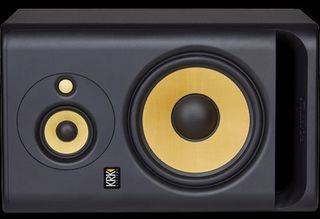
KRK Rockit 10-3 G3 | $499 each | 3-way active | 10" woofers | 4" midrange driver | 1" soft dome tweeter | switchable filter
If you look behind the main stage at the Bonnaroo music festival, you’ll see a strange-looking structure that appears to be a giant bale of hay with a door on it. It’s called Hay Bale Studio, and it’s actually a double-wide trailer with bales of hay piled around and on top of it to provide sound proofing. Inside is a complete recording setup, where more than 30 Bonaroo bands go each year to record live tracks that are almost immediately broadcast on radio. The engineer who runs the studio and does the recording and mixing is Lij Shaw, who spends the rest of the year working at his own space, The Toy Box Studio, in nearby Nashville, as well as hosting the Recording Studio Rockstars podcast.
“We’ll bring in at least 30 bands, and we have a band every hour,” says Shaw of the Hay Bale Studio. “A band comes in at the top of the hour. They walk in the door. We meet and greet there. They come on in, we find out as quick as we can what their lineup will be. And everybody is just in one shared space, and then we have a separate control room. And I will mix. And I do it in a pair of headphones. I’ll just do a 2-mix while they’re performing, and then just get a killer mix, and then we capture that. Our guy Joe Hutchinson runs a mastering station behind me, and he masters the songs and then they’re posted to the radio servers within an hour. Our recordings are broadcast within an hour in 40 different radio markets.”
So where do the KRK Rockit 10-3 G3s come in? “What I needed the monitors for was to be able to get a full-range playback and be able to crank up the mix and get a real feel for what it would sound like if I was just turning it up as loud as I wanted,” he explains. “I set them up in the big room and then afterward go out and just crank up the mixes and see how they sound. They’re awesome for telling me when we’re getting the low end right in the mix and when the energy really sounds great.
Shaw also brought two pairs of smaller monitors with him: the KRK Rockit 5 and Rockit 6. “What I really appreciate about speakers like those is that they give me the ability to reference a mix much closer to what a real consumer experience would be.”
Piper Payne
Mastering and engineering
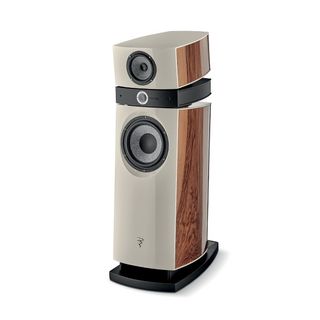
Focal Scala Utopia | $33,999 per pair | 3-way passive | 11" woofer | 6.5" midrange driver | Beryllium inverted dome tweeter | switchable filters
As an engineer at Coast Mastering in Berkeley, Calif., Piper Payne requires a monitor system with the most accurate reproduction possible. With the budget to get virtually any monitor she wanted, Payne chose the passive 3-way Focal Scala Utopias. “First of all, I love the beryllium tweeters,” she says. “Second of all, they were the appropriate size for the room. Third of all, I could put them on a pair of stands that would put them at the right height for me. So I didn’t have to shrink them down, or sit myself up higher, for a larger set of speakers.”
In a passive system of this quality, the power amp choice is almost as important as the monitors themselves. Payne chose VTL MB-450 monoblock tube amplifiers. “I absolutely love the amplifiers that I have, and they worked out perfectly with this pair of speakers. The monoblock tubes and the beryllium tweeter are a perfect pairing for long listening. They’re really light on the distortion and it’s all out of the audible range, so you can listen for a really long time without feeling fatigued.”
Some might wonder about a using a tube amp when absolute clarity is the goal. “A lot of people think of tubes as these warm, squishy kind of things, but these are actually reference tube amplifiers. But what you think about tubes, really the only thing that carries over is the word ‘power,’” she says. “Everything else about a pair of tube amplifiers that are really well-designed, that are driving a pair of very clean, open speakers like the Focals, is all about clearing out any possible distortion—basically, not letting the speaker have to work hard at all.”
Between her acoustically treated room, the Focals, the VTLs, and a set of interconnect cables that cost about $10,000 (not unusual in the mastering world), Payne is able to hear with the precision necessary to do her job. So good is her system that she’s able to hear the flaws clearly on the mixes she receives, and thinks many of them come from substandard monitoring in the mix environment. “If the mixer is sitting too far from a near-field speaker, it ends up feeling too bright and too sibilant. I have a lot of problems with sibilance when the mix people don’t have their system set up quite right.
“I think in general, a lot of mix engineers have their monitors toed in too much. You end up messing up your bass delivery. Or the mixer is not sitting right in the center of the speakers. They might have them set up correctly, but they actually have their face six inches from the computer screen, which, again, will collapse it and make your vocal more sibilant.”
Doug Mountain
Film and TV dialogue editing, music mixing

JBL 3-Series | LSR305 ($149 each) | LSR308 ($249 each) | 2-way active | 5” woofer (305) | 8" woofer (308) |1" tweeter | switchable filters
Doug Mountain has worked in movie and TV sound for many years, primarily as a dialog editor. His credit list includes movies like Sideways, Super 8, Paranormal Activity 2 and TV shows like Breaking Bad and Community. He’s also been very involved with sound for the Grammy Awards. “I’ve been a consulting engineer for the National Academy of Recording Arts and Sciences for 20-plus years,” he says. “I was one of the team that designed how sound is done for the Grammys.
“The main point of dialogue editing is to smooth it all out, so it sounds like one piece of continuous conversation,” Mountain explains. This is challenging because he is presented with audio from multiple cameras and captured with a variety of mics. “When you get it as a dialog editor, it’s going to be really choppy. And the task of the dialog editing is to clean it up. Your job is to go through and cut the appropriate mic for each given scene and then create fill, and fill in between as much as you can, so it sounds like one complete conversation. You have to do a fair amount of critical listening, especially if you’re working with difficult tracks where there might be background noise that you have to deal with, or figure out how you’re going to work around.”
What does Mountain need most from his monitors? “Clarity. Clarity is the most important. Clarity and the ability to listen at relatively loud volumes for long periods of time. And not only clarity in the high end, but clarity in the low end.” Mountain works both at his home studio and in a larger studio facility, and both places are equipped with JBL monitors. “I’ve tried a variety of different speakers,” he says, “and the new JBLs, the 3 Series—the LSR305s and LSR308s—are a huge improvement for me as far as critical listening. Currently, I have both types: 308s and 305s.
“What’s unique about this is whatever I do at home translates up to the bigger systems at the studio quite well,” he says. “So I know, when I’m listening to something close up on a small pair of JBLs, it’s going to be pretty accurate when I hear it reproduced in a bigger room. I was pretty surprised that there’s been this quality of improvement in small self-powered speakers over the past few years, especially at this price point.”
Mountain previously used a different brand of monitors, but changed over to JBL after the company revamped its speaker line a few years ago. “The first speaker that came out in this complete redesign was the M2. They redesigned the high-end drivers, and they went to sort of a different concept for the driver itself. And then they redesigned the horn, so you get a bigger spread of your listening field. Then they took that same technology on the M2 and they scaled it down. Because the M2 costs about $40,000. It’s ridiculous. But they actually took that and scaled it down for regular people to afford the same improvements in their entire line of speakers.”
Andy Freeman
Mixing and editing
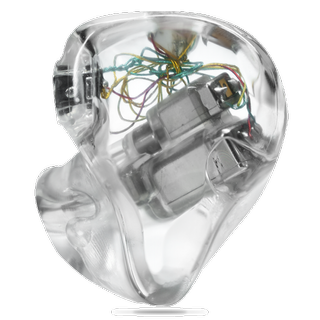
Ultimate Ears UE RM custom-fit | $999 | 3-way | In-ear reference monitors
According to producer Andy Freeman, whose credits include Eisley, Manchester Orchestra, Jet Trash, Branches, and Bonnie Bishop, he’s “always doing crazy things, traveling way too much.” As a result, he’s in places other than his home studio on a regular basis. “I find myself having to work on mixes in odd spaces a lot of times,” he says. “Sometimes on planes, sometimes in a studio that I don’t know that well.” To allow him to monitor on the go, he made a practical decision to invest in a pair of Ultimate Ears UE RM in-ear monitors, which are designed for studio work and were developed in cooperation with Capitol Studios. “I carry my in-ears so I can get some assurances aurally, and know what I’m up against.”
Not only are the UE RMs designed for flat response, with mixing in mind, Freeman has become extremely accustomed to them. “One of the benefits of having in-ear monitors is that they’re also headphones. That’s obvious on the face of it. But you can plug them into your phone and listen to records. Probably at this point, especially when I lived in San Francisco and didn’t have a car and was walking everywhere, I probably listened to more records on those than anything. So those became my drop-dead reference for things.”
Because they’re custom fit, they provide a great deal of isolation, which is essential when mixing on airplanes. “I’ve mixed plenty of things on planes. You always want to check it on speakers if you can. But certainly, it’s a way to do editing, or tuning, or anything like that on a plane. I can get a mix to 80 percent, maybe 90 percent, and then you put the finishing touches on when you’re in your studio.”
Stewart Adam
Audio restoration and mastering

Eve Audio SC208 | $999 each | 2-way active | 8" woofer | AMT RS2 ribbon tweeter | built-in DSP and filters
Audio-restoration is the bread and butter of Plymouth, Mass.-based Stewart Adam’s workload. “Most of my stuff is archival work for colleges and universities that have large collections of oral histories or research projects,” he says. “Sometimes I’ll have 1,000 cassette interviews.”
When he’s not cleaning up old recordings, he does mastering. “Mostly indie stuff, nobody famous. It’s a tough market to crack into, because there are so many people doing it. I think I have a pretty good ear; I think I get pretty good results.”
The bi-amplified Eve Audio SC208 monitors, which feature 8-inch drivers and ribbon tweeters, provide Adam with what he needs both for restoration and mastering: Clarity across the sonic spectrum and plenty of low-end response. “I need a fairly full-range monitor. I’m dealing with records—78 records have a lot of low-frequency information like rumble that you have to be careful of. If I used like 4-inch drivers, I wouldn’t hear that information and would sort of be guessing.”
It’s not only the low end of the SC208s that Adam appreciates; it’s the reproduction from the ribbon tweeters. “I find they have very smooth high end on them.”
Adam’s studio is well-designed from an acoustic standpoint, which helps make his results even more accurate. “The imaging is superb on these speakers in my studio.”
He’s confident enough of the accuracy of his setup that he eschews headphones completely. “I’ve never used headphones,” he says, referring to current audio work. “I did production sound on TV commercials for 30 years, and that’s the only time I ever wore headphones.”
He also pays careful attention to the level at which he monitors at, making sure to stay at non-damaging SPL. “I try to keep my listening level between 80 and 84 dB. It’s moderately loud, but it’s not painful. I still have pretty good hearing.”
Unplug
There you go seven audio pros with diverse monitoring needs and very different monitor choices. One takeaway is that not all studio monitors are used strictly in the studio. Another is that depending on what you’re doing, you can get professional results without spending a fortune. We hope insights from this group of engineers and recording musicians has provided you with an additional perspective that will help you then next time you’re in the market for monitors.


